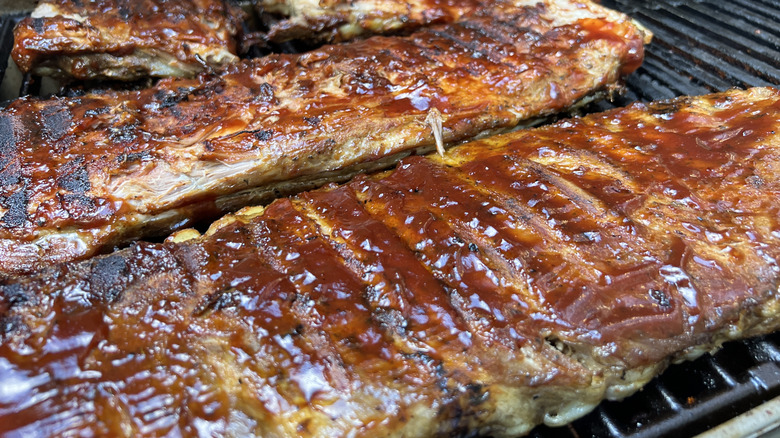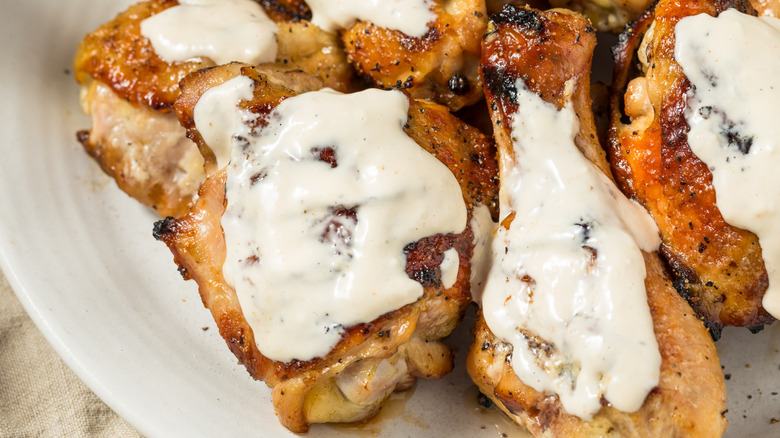Don't Ruin Your Meat By Adding BBQ Sauce Too Early
For many people, Memorial Day is the unofficial first day of summer. After a long winter indoors, outdoor cooking enthusiasts are understandably eager to jump in and start grilling without delay. One thing you don't want to be too quick to do, though, is to start slathering your meat (or vegetables, for that matter) with barbecue sauce as they cook. The results will be anything but tasty.
Most barbecue sauces tend to be thick, gloppy, and sugary. This applies not only to popular store-bought barbecue sauces but also to homemade ones. It's actually fairly difficult to find a recipe that doesn't call for sugar or another form of sweetener. Some people even make barbecue sauce with jelly, while Bobby Flay uses soda to give his barbecue sauce more flavor.
The thing about sugar is that it burns at 265 degrees Fahrenheit. Grill temperatures can easily reach temperatures up to 450 degrees Fahrenheit. This means that the sugary sauce is in danger of burning if you apply it to the meat too early. Add it too late, however, and the food will hardly absorb any of the sauce's flavor. To get that cooked-on sauce flavor while minimizing the risk of it burning, only apply the barbecue sauce during the last 10 or 15 minutes of the food's grilling time. The exception to this is when you are cooking ribs; you should start adding thin layers of sauce during the last hour of cooking. This will ensure that you build up a nice thick coating. Whenever you start adding the sauce, go easy with the application as sugary sauce dripping onto the grill's heating element could cause quite a flare-up.
Non-sugary sauces are better for grilling
If you've always drowned your grilled meat in sweet sauces, perhaps it's time to try something new this Memorial Day by using a more grill-friendly condiment. If the holiday has you feeling nostalgic, you could go seriously old school with the earliest known recipe for barbecue sauce from "Mrs. Hill's New Cook Book." It was published in 1867, making it a year older than Memorial Day itself. This original version was quite a bit different from the barbecue sauces of today since it consisted of melted butter mixed with vinegar, salt, black pepper, red pepper, and mustard.
Alabama white sauce, which dates back to the 1920s, is another option that doesn't have to be sweet. Its primary ingredient is mayonnaise which is mixed with vinegar, lemon juice, horseradish, salt, pepper, and cayenne. Some recipes may include a small amount of sugar, but others omit it. A classic Carolina-style mop sauce is also savory instead of sweet; its primary ingredients are vinegar, crushed red pepper, black pepper, and Worcestershire sauce.
These sauces are less likely to burn than their sugary counterparts, with the exception of the butter-based one (butter can burn at 250 degrees Fahrenheit). To negate this issue, use clarified butter; it won't start smoking until around 400 degrees Fahrenheit. It's perfectly okay to grill with mayo, and seasoned vinegar also makes for practically risk-free flavor as long as you apply it thinly enough that it doesn't drip off the meat.

